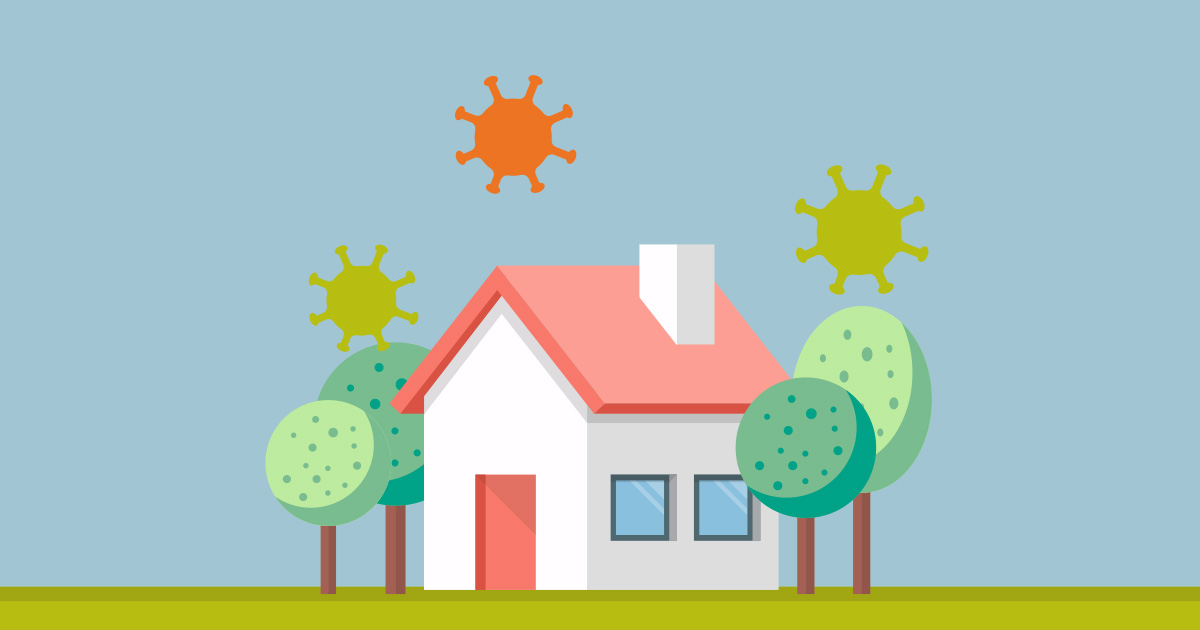There are a few things we can count on to change frequently: Midwestern weather forecasts, a young child’s clothing choices and the housing market. And 2020 is filled with record-book changes.
The 2020 housing market started out strong, with the highest seasonally adjusted annual rate since February 2007. Existing-home sales increased 6.5% from January 2020 to February 2020 and all four regions in the U.S. saw home prices increase, which was great news for sellers.
Then the coronavirus hit, and the housing market changed.
- In March 2020, housing market activity dropped 8.5% from February, but existing-home sales increased ever so slightly at 0.8%.
- In April 2020, existing-home sales fell 17.8% from March, with the seasonally adjusted annual rate at its lowest since September 2011. The drop in sales, however, did not impact prices, marking the 98th consecutive month of year-over-year home price increases.
- In May 2020, sales of existing-homes fell 9% from April, while prices rose 2.3% from 2019 for the 99th consecutive month of home price increases.
2020 real estate trends: the pros and cons of buying or selling a home during a pandemic
While the home buying market has notoriously always been in flux, the coronavirus has had the biggest impact on home sales in history, as more than 44.2 million Americans have filed for unemployment benefits since safer-at-home orders rolled out across the country beginning mid-March. Check out a few of the pros and cons to consider if you are thinking of buying or selling a home in 2020.
Pros
- For sellers: Home prices are still rising. In April 2020, median home prices increased 7.3% from the previous year. Home price increases aren’t expected to last, though, with Zillow estimates putting overall sale prices in 2020 at 2-3% lower than 2019.
- For buyers: Interest rates are low. During financial crises, like the one caused by the coronavirus pandemic, the Federal Reserve lowers interest rates to help stimulate growth during economic downturns. Lower interest rates put things, like buying a home, into reach for more people. It also means a lower monthly payment and more spending money left in consumers’ checking and savings accounts. Mortgage rates hit a record low in June 2020 with 30-year fixed-rate mortgage rates at 3.44%.
- For buyers: With home sales dropping, sellers may be more apt to negotiate. While prices have remained steady, the number of people looking for homes is dwindling, meaning some sellers may be more willing to drop the sale price rather than wait—potentially several months—for a higher offer.
Cons
- For sellers: You may have to wait a bit longer. According to a recent estimate from Zillow, home sales are expected to drop by nearly 60% in 2020. Home sales are expected to recover later this year, with sales levels returning to pre-coronavirus levels by the end of 2021.
- For buyers: It’s still a tight market. This means there aren’t a lot of homes on the market. A recent report from Zillow shows that total inventory of homes for sale is down 20% from 2019, and the inventory levels in 2019 were already low.
- For buyers: It may be tougher to get a loan. As unemployment levels reached record lows (14.7%) and the S. Congress approved policies to delay foreclosures and late payment penalties, some lenders increased requirements for mortgage loan approvals. Stricter approval measures include requiring a higher credit score and larger down payment.
Whether you’re moving to a new area, your family is getting bigger or you’re ready to downsize, you can still buy or sell a home during the coronavirus; the process just may take longer than in the past. If you are interested in entering the housing market as a buyer, connect with one of Verve’s Mortgage Architects to get a better understanding of the impact coronavirus may have on your search for a new home.






 Federally Insured by NCUA |
Federally Insured by NCUA |  Equal Housing Opportunity |
Equal Housing Opportunity |